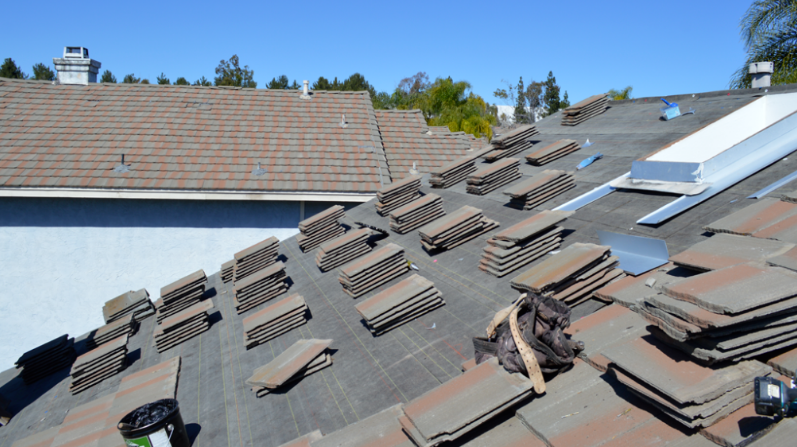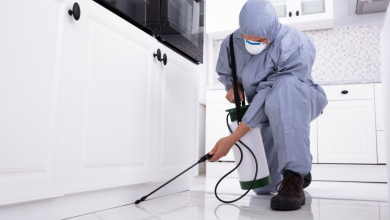San Diego’s picturesque coastal location offers residents stunning views and a pleasant climate, but it also presents unique challenges for maintaining the integrity of their homes, especially their roofs. Emergencies can strike at any time, whether it’s due to sudden storms, high winds, or unexpected damage from falling debris. When faced with a roofing emergency, knowing how to respond quickly and effectively can make all the difference. This guide provides essential information on emergency roof repair in roof repair San Diego including common causes, immediate actions to take, how to choose the right contractor, and tips for preventing future emergencies.
Understanding Common Causes of Roof Emergencies
Several factors can lead to roofing emergencies in San Diego. Being aware of these potential issues can help you respond more effectively when they occur.
Storm Damage
Although San Diego is known for its mild weather, the region occasionally experiences intense storms that can wreak havoc on roofs. Heavy rains and strong winds can loosen shingles, damage flashing, and cause leaks.
Falling Debris
Trees and other objects can fall on your roof during storms or high winds, causing significant damage. Even a single branch can crack shingles, puncture roofing materials, or damage structural components.
Water Leaks
Water leaks are a common roofing emergency, often resulting from damaged or missing shingles, cracked flashing, or clogged gutters. Leaks can quickly lead to extensive water damage inside your home.
Animal Infestations
Rodents and birds can cause significant damage by nesting in your roof and gnawing on roofing materials. Over time, this can lead to leaks and structural damage that require immediate attention.
Structural Failures
Issues such as sagging roofs, cracked supports, or weakened decking can compromise the integrity of your roof. These problems can escalate quickly and may pose a serious safety risk if not addressed promptly.
Immediate Actions to Take During a Roofing Emergency
When a roofing emergency occurs, quick action is crucial to minimize damage and ensure the safety of your home and family. Here are the steps you should take immediately:
Ensure Safety First
Before attempting any repairs or assessments, ensure that your home and family are safe. Evacuate any areas directly under the damaged roof and avoid entering any part of the house that appears unstable.
Assess the Damage
Once it’s safe to do so, inspect the roof from the ground to get an idea of the extent of the damage. Look for visible signs such as missing shingles, fallen branches, or areas where water is leaking into the house.
Protect Your Home from Further Damage
Use tarps or plastic sheeting to cover any exposed areas and prevent further water damage. Secure the coverings tightly to ensure they stay in place during adverse weather conditions.
Contact a Professional Roofing Contractor
Call a licensed and insured roofing contractor who offers emergency services. Provide them with details about the damage and schedule an inspection as soon as possible. A professional will be able to assess the damage accurately and provide an estimate for the necessary repairs.
Document the Damage
Take photographs and videos of the damage for insurance purposes. This documentation will be helpful when filing an insurance claim and can provide evidence of the extent of the damage.
Contact Your Insurance Company
Notify your insurance company about the damage and initiate the claims process. Provide them with the documentation you’ve gathered and follow their instructions for filing a claim.
Choosing the Right Emergency Roof Repair Contractor
Selecting the right contractor is critical in ensuring that emergency repairs are handled efficiently and effectively. Here are some tips to help you choose a reliable contractor in San Diego:
Look for Emergency Services
Ensure that the contractor offers 24/7 emergency roof repair services. Quick response times are essential during a roofing emergency to prevent further damage and restore the integrity of your roof.
Verify Licensing and Insurance
Check that the contractor is licensed by the California Contractors State License Board (CSLB) and has the appropriate C-39 Roofing Contractor license. Verify that they carry both general liability insurance and workers’ compensation insurance to protect yourself from liability.
Check Experience and Reputation
Choose a contractor with extensive experience in handling roofing emergencies in San Diego. Read online reviews, ask for references, and look for a contractor with a strong reputation for quality work and customer service.
Request Detailed Estimates
Obtain detailed written estimates from at least three different contractors. Ensure that the estimates include a breakdown of costs for labor, materials, and any additional fees. Compare the estimates to ensure you’re getting fair pricing and a clear understanding of the work required.
Evaluate Communication and Responsiveness
Select a contractor who communicates clearly and responds promptly to your inquiries. Good communication is crucial during an emergency, and a reliable contractor should keep you informed throughout the repair process.
Ask About Warranties
Ensure that the contractor offers warranties on both the labor and materials used for the repairs. A workmanship warranty should cover any installation errors, while a material warranty should cover defects in the roofing materials.
Effective Solutions for Common Roofing Emergencies
Understanding the types of repairs that may be necessary during an emergency can help you manage the situation more effectively. Here are some common roofing emergencies and their solutions:
Fixing Leaks and Water Damage
Leaks can cause significant damage if not addressed promptly. A professional contractor can identify the source of the leak and repair or replace damaged shingles, flashing, or other roofing components to prevent further water intrusion.
Replacing Damaged Shingles or Tiles
Missing or damaged shingles or tiles can leave your roof vulnerable to leaks and further damage. A contractor will replace the affected areas with matching materials to restore the roof’s integrity and appearance.
Clearing and Repairing Gutter Systems
Clogged or damaged gutters can lead to water pooling on the roof and causing leaks. Emergency repairs may include cleaning out debris, repairing gutter sections, and ensuring proper drainage to prevent future issues.
Addressing Structural Damage
Structural issues, such as sagging or weakened supports, require immediate attention to prevent collapse. A contractor will assess the damage and make the necessary repairs to reinforce the roof structure and ensure safety.
Dealing with Fallen Debris
Removing fallen debris and repairing any resulting damage is critical to restoring the roof. A contractor will safely remove branches or other debris and repair any punctures, cracks, or other damage caused by the impact.
Preventing Future Roofing Emergencies
While it’s impossible to prevent all emergencies, taking proactive steps can minimize the risk of future roofing issues. Here are some tips for maintaining your roof and preventing emergencies:
Regular Inspections and Maintenance
Schedule regular roof inspections at least twice a year to identify and address potential issues before they become major problems. Maintenance tasks may include cleaning gutters, replacing damaged shingles, and checking for signs of wear and tear.
Trim Overhanging Trees
Trim back any tree branches that overhang your roof to reduce the risk of falling debris during storms or high winds. This will also prevent leaves and branches from clogging gutters and downspouts.
Install Quality Roofing Materials
Invest in high-quality roofing materials that are suited to San Diego’s climate. Durable materials such as asphalt shingles, clay tiles, or metal roofing can withstand the elements better and reduce the likelihood of damage.
Maintain Proper Ventilation
Ensure your roof has adequate ventilation to prevent moisture buildup and reduce the risk of water damage and mold growth. Proper ventilation can also extend the life of your roofing materials.
Keep Gutters and Downspouts Clear
Regularly clean gutters and downspouts to ensure proper drainage and prevent water from pooling on the roof. Consider installing gutter guards to reduce the frequency of cleaning and prevent debris buildup.
Conclusion
Emergency roof repair in roof repair San Diego requires quick action, knowledgeable decision-making, and the right professional help. Understanding the common causes of roofing emergencies, knowing what steps to take in the event of an emergency, and choosing a reliable contractor are all crucial for effectively managing and resolving roofing issues. By taking proactive measures to maintain your roof and address potential problems early, you can help ensure the long-term health and safety of your home. Investing in quality repairs and regular maintenance will not only protect your home but also provide peace of mind for you and your family.





